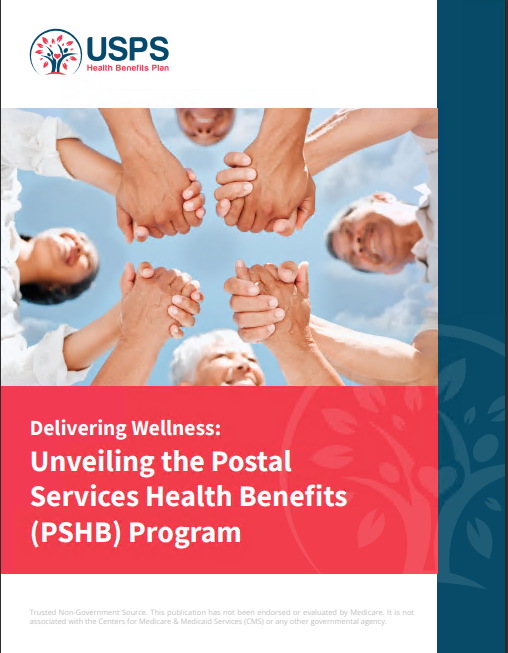Key Takeaways
-
Medicare Part A and PSHB work together to help manage your hospital-related expenses as a Postal Service retiree, but understanding each program’s cost structure is essential to avoid surprises.
-
Knowing the specifics of coinsurance, copayments, and deductibles under Medicare and PSHB ensures you can plan effectively for your healthcare needs.
Your Path to Navigating Hospital Costs Under Medicare Part A and PSHB
If you’re a Postal Service retiree, you likely rely on Medicare and the Postal Service Health Benefits (PSHB) program to cover your healthcare expenses. While these programs offer robust benefits, understanding their cost-sharing mechanisms for hospital services is crucial for managing your budget effectively. Here, we’ll break down the essentials so you know what to expect when dealing with hospital-related costs. By grasping the details, you’ll feel more confident navigating coverage options and managing expenses.
Medicare Part A: The Foundation of Your Hospital Coverage
What Does Medicare Part A Cover?
Medicare Part A focuses on inpatient hospital services, covering:
-
Semi-private room accommodations.
-
Meals and general nursing care.
-
Drugs and supplies related to your inpatient treatment.
-
Skilled nursing facility (SNF) care post-hospitalization.
-
Limited home healthcare and hospice care.
It’s essential to understand the scope of this coverage since it directly affects how much you’ll need to pay out-of-pocket for various services. Knowing what’s included helps you prepare for unforeseen hospital visits or longer stays in skilled nursing facilities.
2025 Cost Breakdown for Medicare Part A
As a retiree, your costs depend on your work history and length of hospital stays:
-
Premiums: Most beneficiaries qualify for premium-free Part A. If you’re not eligible, you pay $518/month for fewer than 30 quarters of Medicare taxes or $284/month for 30-39 quarters.
-
Deductible: Each benefit period requires you to meet a $1,676 deductible before Medicare starts covering your hospital costs.
-
Coinsurance:
-
Days 1-60: $0 after meeting the deductible.
-
Days 61-90: $419 per day.
-
Days 91 and beyond: $838 per lifetime reserve day (up to 60 days).
-
Skilled nursing facilities: $0 for the first 20 days, $209.50/day for days 21-100.
-
Being prepared for these costs ensures that unexpected hospitalizations don’t take you by surprise. For extended stays or multiple benefit periods, costs can accumulate quickly, making it critical to budget appropriately.
PSHB and How It Complements Medicare
The PSHB program is designed specifically for Postal Service retirees, offering additional support for hospital costs not fully covered by Medicare Part A.
Key Benefits of PSHB
-
Deductible Assistance: PSHB often reduces or waives deductibles if you’re enrolled in Medicare Part B.
-
Lower Coinsurance: Your out-of-pocket costs for hospital stays may decrease, depending on your specific PSHB plan.
-
Comprehensive Coverage: Includes services like vision, dental, and hearing, which Medicare doesn’t cover.
This added layer of coverage ensures that even when Medicare falls short, you’re not left with a financial burden. The benefits of combining PSHB with Medicare are particularly evident for retirees who require frequent medical attention or hospital care.
Cost Sharing Under PSHB
-
In-Network Deductibles: Ranges from $350-$500 for low-deductible plans to $1,500-$2,000 for high-deductible plans.
-
Coinsurance: Typically 10%-30% for in-network services; 40%-50% for out-of-network.
-
Copayments: May vary but generally include $100-$150 for emergency room visits and $30-$60 for specialists.
With PSHB’s cost-sharing model, it’s important to understand how different plans distribute expenses to avoid unexpected charges.
How Medicare and PSHB Work Together
When you’re enrolled in both Medicare and PSHB, these programs coordinate to maximize your coverage. Medicare Part A is primary for hospital stays, meaning it pays first. PSHB then steps in to cover remaining costs, often reducing your financial burden.
Medicare Part B Enrollment Requirement
To maintain PSHB coverage, you must enroll in Medicare Part B. This integration reduces your overall out-of-pocket expenses, especially for:
-
Deductibles.
-
Skilled nursing facility costs.
-
Durable medical equipment.
Understanding this requirement helps ensure your coverage remains intact and optimized. Skipping Part B enrollment could result in higher premiums and less comprehensive coverage, especially for outpatient services and ongoing medical needs.
What Happens If You Don’t Enroll in Part B?
If you forgo Part B, you’ll likely face higher PSHB premiums and limited coverage for services like outpatient care and physician visits. Keep this in mind when planning your healthcare strategy. Overlooking these details could leave significant gaps in your coverage.
Planning for Hospital Costs
Budgeting for Deductibles and Coinsurance
Managing hospital expenses means preparing for both Medicare and PSHB out-of-pocket costs:
-
Deductibles: Factor in Medicare’s $1,676 deductible for each benefit period. If your PSHB plan doesn’t waive this, budget accordingly.
-
Coinsurance: Plan for $419/day for extended hospital stays under Medicare and additional percentages from PSHB.
-
Skilled Nursing Facilities: Remember the $209.50 daily coinsurance for days 21-100.
The key to effective budgeting lies in understanding how often you might require hospital care and planning your finances accordingly. Regularly reassess your healthcare needs to ensure you’re financially prepared.
Emergency Care Considerations
For emergency room visits, PSHB copayments ($100-$150) apply in addition to any Medicare-covered costs. If your care requires admission, your hospital stay coverage shifts to Medicare Part A, resetting the cost-sharing framework. This coordination ensures that even in critical situations, your costs remain manageable.
Maximizing Your Benefits
Review Annual Notices of Change (ANOC)
Both Medicare and PSHB send ANOCs each year detailing changes to premiums, deductibles, and benefits. Reviewing these updates ensures you’re prepared for any financial adjustments. Staying informed is one of the best ways to optimize your healthcare spending.
Compare PSHB Plan Options
During Open Season (October 15 to December 7 annually), explore PSHB plans to find the one that best complements your Medicare coverage. Look for plans that offer benefits like Part B premium reimbursements or reduced deductibles. Evaluating your options thoroughly can lead to significant cost savings.
What to Do if Hospital Costs Become Overwhelming
Seek Assistance Programs
If hospital costs stretch your budget, several resources can help:
-
Medicare Savings Programs: Assist with premiums, deductibles, and coinsurance.
-
Low-Income Subsidy (LIS): Helps with prescription drug costs but may also impact other healthcare expenses.
Exploring these options early ensures you’re ready to address financial challenges without compromising your healthcare needs.
Consider High-Deductible Health Plans (HDHPs) with HSAs
If eligible, these plans pair with Health Savings Accounts (HSAs), allowing you to save pre-tax dollars for medical expenses, including hospital costs. HSAs offer flexibility and tax advantages that can help offset rising healthcare costs.
Key Deadlines to Remember
Medicare Enrollment Periods
-
General Enrollment Period: January 1 – March 31 annually, for those who missed their Initial Enrollment Period.
-
Annual Open Enrollment: October 15 – December 7, to make changes to Medicare plans.
PSHB Open Season
The 2025 PSHB Open Season is from November 11 to December 13. Use this time to adjust your health plan for the coming year. Ensuring you’ve made the right selections during these windows will keep your coverage effective and tailored to your needs.
Staying Ahead of Rising Costs
Monitor Cost Trends
Healthcare costs rise annually. Keeping track of deductible, premium, and coinsurance changes ensures you’re financially prepared. Adapting to these trends by updating your healthcare strategy is key to long-term stability.
Utilize Preventive Services
Medicare and PSHB cover many preventive services at no additional cost, helping you avoid costly hospitalizations. Regular screenings and checkups can save you from more significant expenses later.
Your Health and Financial Well-being
Understanding the interplay between Medicare Part A and PSHB is essential for managing hospital-related costs effectively. By budgeting for deductibles, coinsurance, and premiums, and staying informed about annual changes, you can make the most of your healthcare benefits. Don’t forget to review your plans regularly and take advantage of enrollment periods to optimize your coverage. Planning today ensures peace of mind tomorrow.











